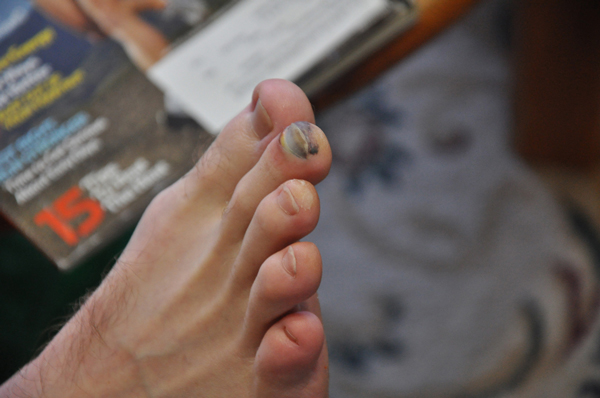Can a Broken Toe be Fixed?

Of the 26 bones in the foot, 19 are toe bones. For whatever reason, there is a common myth that says broken toes can't be fixed, which leads many people to avoid medical care when they think their toe is broken.
“What I tell patients is, there are things we can do to make a broken toe heal better and prevent problems later on, like arthritis or toe deformities,” said Samuel Nava, a spokesperson for the American College of Foot and Ankle Surgeons.
Broken toes that aren’t treated correctly can also make walking and wearing shoes difficult, according to information from the college. A foot and ankle surgeon will X-ray the toe to learn more about the fracture. If the broken toe is out of alignment, the surgeon may have to insert a pin, screw or plate to reposition the bone.
Here are four other myths about feet and ankles:
Myth: My foot or ankle can’t be broken if I can walk on it.
Reality: It’s entirely possible to walk on a foot or ankle with a broken bone. “It depends on your threshold for pain,” as well as the severity of the injury, Nava said. But it’s not a smart idea. Walking with a broken bone can cause further damage.
It is crucial to stay off an injured foot until diagnosis by a foot and ankle surgeon. Until then, apply ice elevate the foot to reduce pain.
Sign up for the Live Science daily newsletter now
Get the world’s most fascinating discoveries delivered straight to your inbox.
Myth: Shoes cause bunions.
Reality: Bunions are most often caused by an inherited faulty mechanical structure of the foot. It is not the bunion itself that is inherited, but certain foot types make a person prone to developing a bunion. While wearing shoes that crowd the toes together can, over time, make bunions more painful, shoes themselves do not cause bunions.
Although some treatments can ease the pain of bunions, only surgery can correct the deformity.
[The Truths Behind 10 Old Wives' Tales ]
Myth: Cutting a notch (a “V”) in a toenail will relieve the pain of ingrown toenails.
Reality: When a toenail is ingrown, the nail curves downward and grows into the skin. Cutting a “V” does not affect the growth of the toenail. New nail growth will continue to curve downward. Cutting a “V” may actually cause more problems and is painful in many cases.
Myth: Corns have roots.
Reality: A corn is a small build-up of skin caused by friction. Nava says many corns result from a hammertoe deformity, where the toe knuckle rubs against the shoe. The only way to eliminate these corns is to surgically correct the hammertoe condition.
Unlike a callus, a corn has a central core of hard material. But corns do not have roots. Attempting to cut off a corn or applying medicated corn pads can lead to serious infection or even amputation. A foot and ankle surgeon can safely evaluate and treat corns and the conditions contributing to them.
Follow Life's Little Mysteries on Twitter @llmysteries. We're also on Facebook & Google+.











